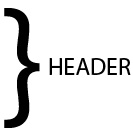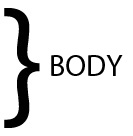How to write a Cover Letter
How to write a covering letter
Writing a cover letter is easy when it is accompanying an ordered material as it doesn’t require any skill. Others covering letters like – visa cover letter, loan cover letter, cover letter scholarship, cover letter for CV, cover letter for job application and some others require moderate to average skills. While the content and the objective of cover letters may change they follow almost a similar format, that of a business or official letter. They all have a - Header, Introduction, Body and Closing. Writing a covering letter thus requires a reasonable effort. To better guide you we have provided cover letter formats, templates and examples to make your job easy.
- Letterhead – A letterhead is topmost heading printed on letter paper. The heading consists of name, address generally accompanied by a logo of the organisation. Most professional firms have their own pre-designed letterhead. Smaller firms may not have it and may use their name, address where the letterhead would be placed.
- Date – The date has to written exactly below the letter head. The date is important part of a letter and is used for reference. The date is supposed to be written in full with day, month and year. Example – 31st May 2012 or May 31st, 2012
- Recipient – Recipient or Receiver's name and Address is next part of a cover letter. This part includes the Name of the Receiver, his Designation and Full address inclusive of phone and email.
- Salutation – Salutation is word of greeting used to begin a letter. It is courteous gesture and shows respect to the receiver. Dear Sir / Madam etc. are specifically known as Opening Salutation.
- Body – Body is the main part of the letter. The message of the letter is to be clearly mentioned in the first line, itself. The body has the relevant subject matter which is to be divided into a number of paragraphs, mostly 3-4 or more depending upon the matter. If there are instructions etc. these are to be in a bulleted or numerically listed in separate lines. The Last Paragraph should sum up the whole letter and offer any assistance or take a course of action as required or instructed.
- Closing (subscription) – Closing refers to the end of the letter. It is courteous and shows a mark of respect towards the recipient. Yours Sincerely or Sincerely etc. are specifically known as Closing Salutations.
- Signature – Sign your name after a few spaces. If you have your Printed Name, then sign above the line containing your typed name. Signature is to written in Black or Blue Ink. If you have an electronic signature you can use that too. Scanned image of your signature can also be used, if it confers with rules of your organisation.Sender’s Name, title and contact information – If not provided in the letterhead, one can include his Name, Title, Address, Phone, Email etc. in separate lines.
- Enclosure – If you have attached some documents, Type Enclosures few lines after the Signature of Senders Info. Provide the number and type of documents attached e.g. ‘Enclosures (2): brochure, resume’
Depending upon the need and the objective of the cover letter one can observe the following tips:
- Short and Specific – Cover letter is meant to be short and specific by default. It should be short covering only the relevant information and nothing else.
- Make it Impressive – A covering letter should interpret the data-oriented, factual resume with bit of personal touch.
- Interesting and Involving Language - An encouraging or inviting tone of language is essential; it incites the reader to know you better.
- Get Tips from the Concerned – Every corporate environment has its mannerisms in terms of document handling and so on. You can get in touch with any of the concerned staff where you are applying for. See the pattern of the cover letters and take cues from them.
- Give a final Review - Take the time to review your cover letter and omit any mistakes. Get it reviewed from your friends and family to get their feedback.
Cover Letter Formats
Cover Letter Format 1
|
Organisation / Personal Letter Head Date Recipient's Name (specific official or person) Recipient's Address (can be positioned left, right or centre)
Reference or Subject (as required) Dear Recipient (Salutation) First Paragraph – Brief information about the order, material, request, position desired etc. Second Paragraph – Additional information relative to product, personal skills, achievements etc. Third Paragraph – Further assistive information
Subscription – Thanking you, yours sincerely etc. Your Signature Your Typed First Name Last Name Your Designation (as required) Your Organisation (as required) ENCL: (optional) stands for ‘Enclosure’ i.e. attached documents CC: (as required) stands for Carbon Copy, i.e. same copy to many |
Cover Letter Format 2
|
Date Recipient's Name (specific official or person)
Dear Recipient (Salutation) First Paragraph – Brief information about the order, material, request, position desired etc. Second Paragraph – Additional information relative to product, personal skills, achievements etc. Third Paragraph – Further assistive information
Subscription – Thanking you, yours sincerely etc. Your Signature Your Typed First Name Last Name Your Address and Contact ENCL: (optional) stands for ‘Enclosure’ i.e. attached documents |



